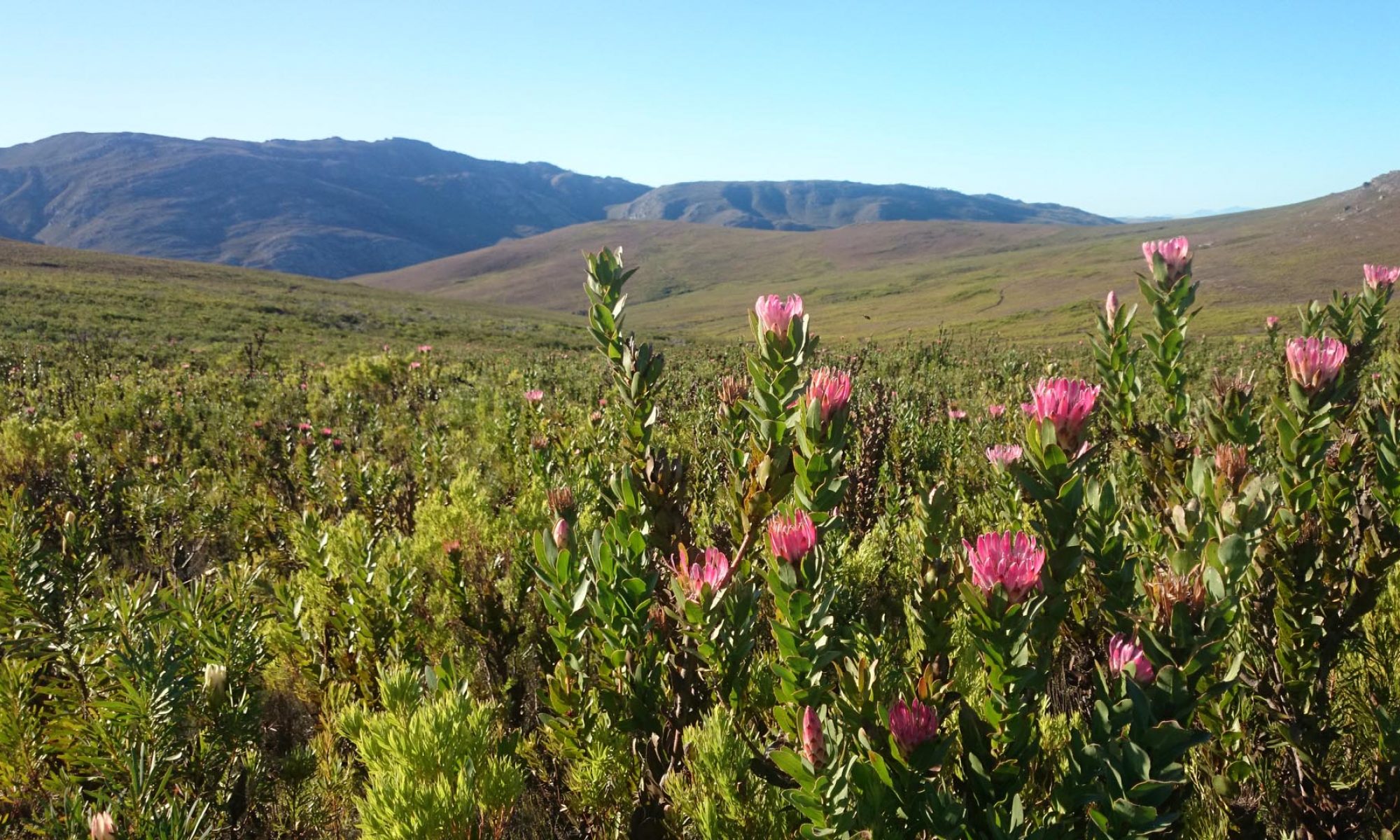As a non-profit organisation, we have dedicated ourselves above all to saving the FYNBOS. This plant community, an important component of the internationally recognised ‘Cape Floral Kingdom’ with its extraordinarily high biodiversity, is facing various threats as a result of human activities and landuse practices . Further expansion of protected areas is urgently needed here in order to conserve for posterity the unique endemic flora and the fauna dependent on the long term resilience and extraordinary biodiversity of the Cape Floral Kingdom.
Since 2014, the FYNBOS TRUST has acquired over 3,000 hectares of nature reserves in the South African province of WESTERN CAPE. We carry out the necessary conservation and maintenance measures in these private nature reserves as well as on neighbouring areas of high biodiversity value. Neophytes (foreign harmful plants known as ALIEN INVASIVE PLANTS in South Africa) have to be removed regularly, usually with painstaking manual labour, but also with chainsaws and technical equipment. These aliens introduced by humans over 100 years ago (e.g. Australian Acacia such as Port Jackson and Black Wattle as well as many Eucalyptus species) completely dominate and smother the indigenous flora, thereby destroying their habitat, significantly increasing biomass and reducing water runoff.
Uncontrolled fires are also a threat to the fynbos if they are too frequent or unseasonal. Fynbos is a fire dependant system and in fact, and quite surprisingly, needs fire every 8 to 15 years, as a very large proportion the plants of the fynbos only reproduce with the help of fire. This biocoenosis has co-evolved with fire for between 4 and 6 million years. As a consequence of a rapidly growing human population and the interuption of the natural fire regime so-called ‘controlled or prescribed burns’ are required. -These must be well prepared and planned in order to actually ‘reset’ nature which is almost always an imporant water catchment area and to prevent large and very destructive a WILDFIRES over the entire landscape.
The diversity of native plants is a feast for the eyes …

